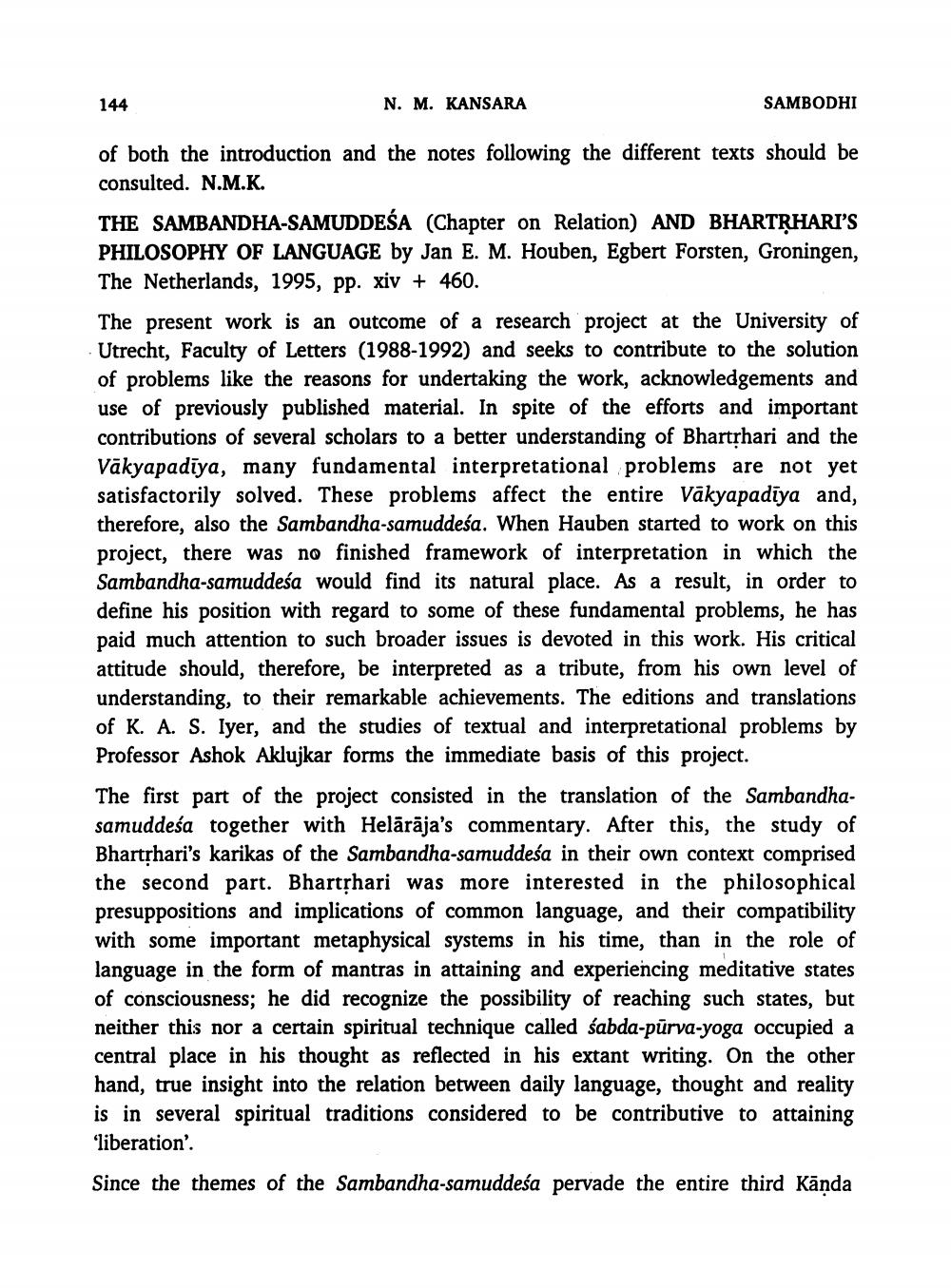________________
144
N. M. KANSARA
SAMBODHI
of both the introduction and the notes following the different texts should be consulted. N.M.K.
THE SAMBANDHA-SAMUDDEĆA (Chapter on Relation) AND BHARTRHARI'S PHILOSOPHY OF LANGUAGE by Jan E. M. Houben, Egbert Forsten, Groningen, The Netherlands, 1995, pp. xiv + 460. The present work is an outcome of a research project at the University of Utrecht, Faculty of Letters (1988-1992) and seeks to contribute to the solution of problems like the reasons for undertaking the work, acknowledgements and use of previously published material. In spite of the efforts and important contributions of several scholars to a better understanding of Bhartshari and the Vakyapadīya, many fundamental interpretational problems are not yet satisfactorily solved. These problems affect the entire Vakyapadiya and, therefore, also the Sambandha-samuddeśa. When Hauben started to work on this project, there was no finished framework of interpretation in which the Sambandha-samuddeśa would find its natural place. As a result, in order to define his position with regard to some of these fundamental problems, he has paid much attention to such broader issues is devoted in this work. His critical attitude should, therefore, be interpreted as a tribute, from his own level of understanding, to their remarkable achievements. The editions and translations of K. A. S. Iyer, and the studies of textual and interpretational problems by Professor Ashok Aklujkar forms the immediate basis of this project.
The first part of the project consisted in the translation of the Sambandhasamuddeśa together with Helārāja's commentary. After this, the study of Bhartrhari's karikas of the Sambandha-samuddeśa in their own context comprised the second part. Bharthari was more interested in the philosophical presuppositions and implications of common language, and their compatibility with some important metaphysical systems in his time, than in the role of language in the form of mantras in attaining and experiencing meditative states of consciousness; he did recognize the possibility of reaching such states, but neither this nor a certain spiritual technique called sabda-pūrva-yoga occupied a central place in his thought as reflected in his extant writing. On the other hand, true insight into the relation between daily language, thought and reality is in several spiritual traditions considered to be contributive to attaining ‘liberation'.
Since the themes of the Sambandha-samuddeśa pervade the entire third Kānda




